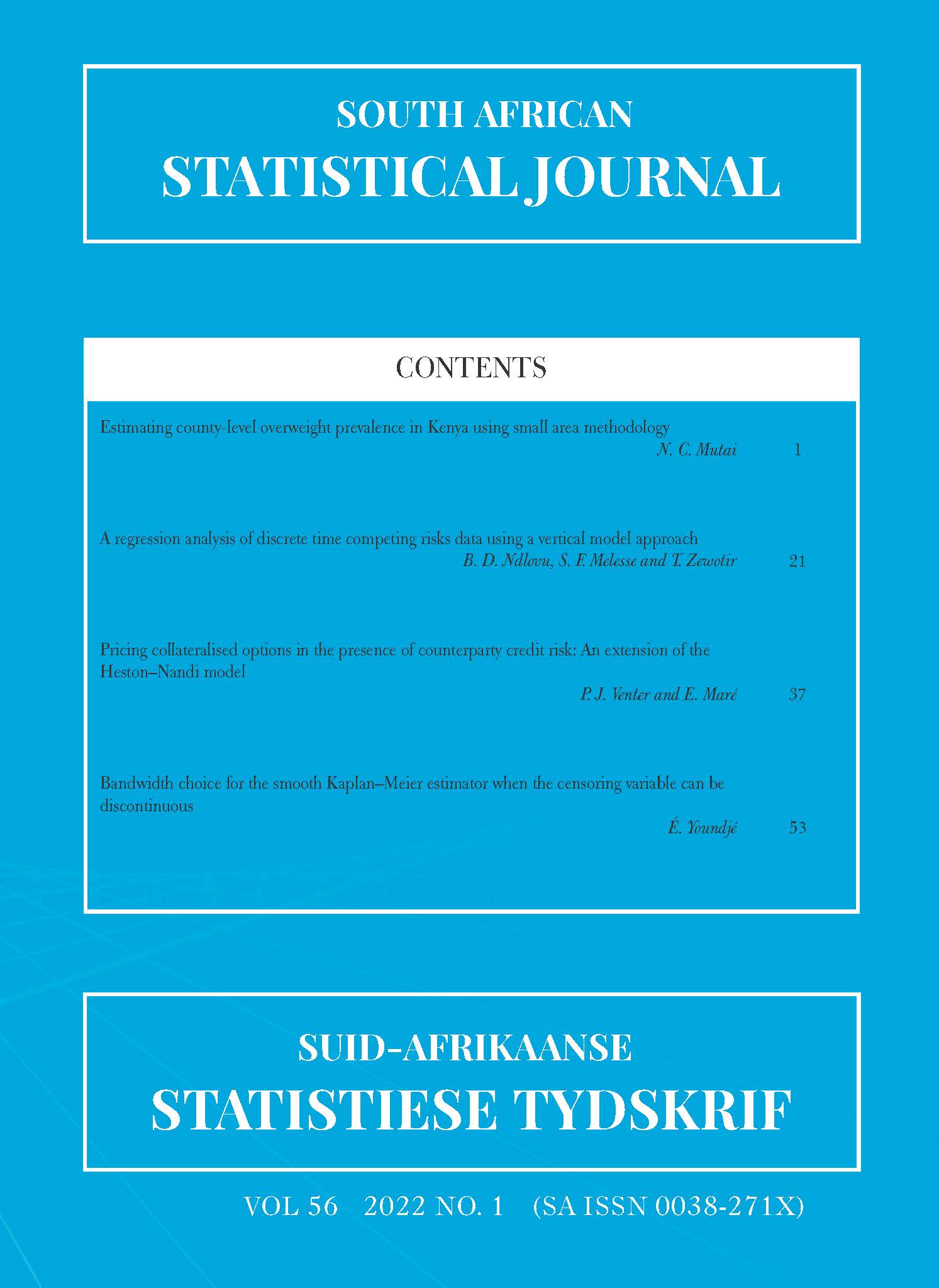Estimating county-level overweight prevalence in Kenya using small area methodology
Abstract
Public health surveillance of overweight prevalence is essential to assess the extent of the problem, identify regions and groups most affected and inform policy-making. However, the needed reliable data at disaggregated levels is lacking in Kenya. The Kenya STEPwise Survey for Non-communicable Diseases and Risk
Factors (KSSNDRF) was nationally representative. It was used to obtain various indicators of non-communicable diseases and risk factors including overweight. However, due to small sample sizes at lower levels like at the county, overweight prevalence estimates are statistically imprecise (i.e., high variance). Therefore, to increase the effective sample size we combine data from the KSSNDRF and the Kenya Population and Housing Census by model-based small area methods. In particular, we fit an arcsine square-root transformed Fay–Herriot model. To transform back to the original scale, we use a bias-corrected back transformation. For this model, we smooth the design variance using Generalised Variance Functions. We compute the mean squared error estimates using a bootstrap procedure. We found that counties within urban areas — including the major towns like Nairobi, Nakuru, Nyeri and Mombasa — have a higher prevalence of overweight compared to rural counties. Although the paper focuses on overweight prevalence in Kenya, the presented method can also be applied to other indicators in developing countries with similar data sources.

